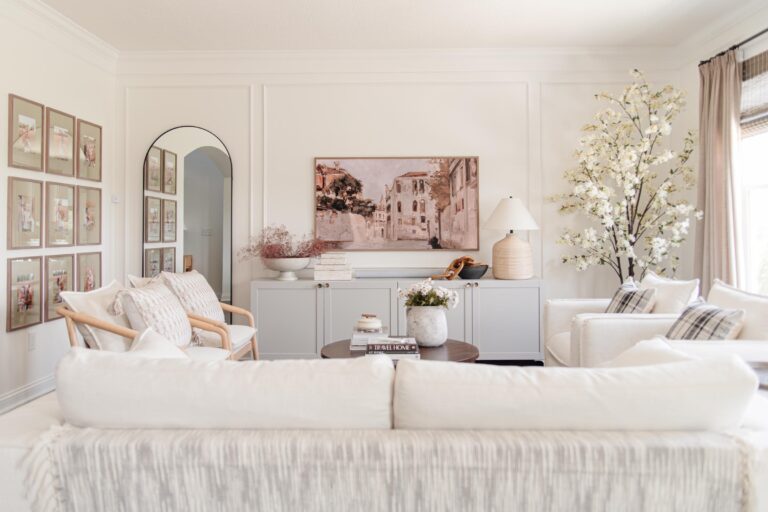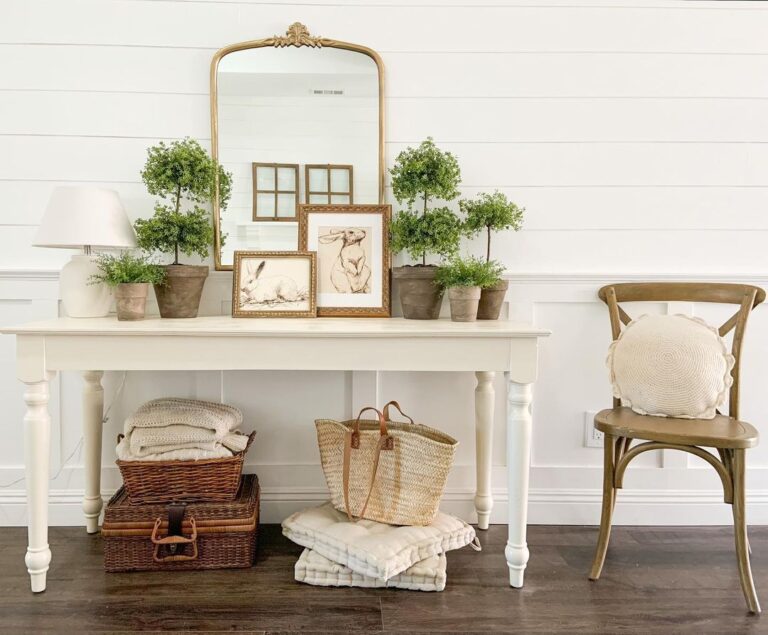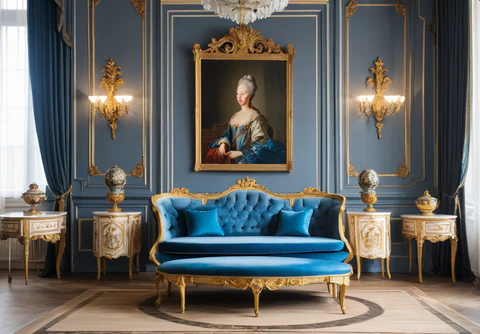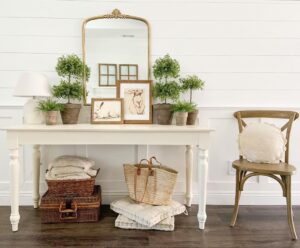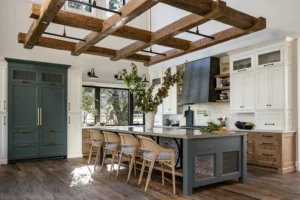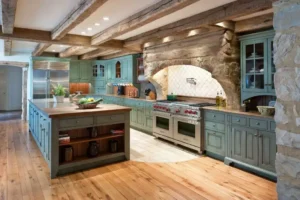On a cold Russian morning in 1787, Empress Catherine II, more commonly known as Catherine the Great, stepped into her Winter Palace, her vision sharp and determined. She surveyed the grand hall with a meticulous eye as artisans from across Europe and Russia toiled to put the finishing touches on her newest furniture collection. The gleaming marquetry, gilded mirrors, and intricate carvings were not just decorative elements but symbols of power, prestige, and Catherine’s insatiable desire to modernize and elevate Russian culture. Catherine wasn’t simply admiring a chair or desk at that moment. She admired the future of Russian artistry, a future that would be remembered and revered centuries later.
The reign of Catherine the Great (1762-1796) was not just a golden age for Russian politics and territorial expansion but also for the arts, including the creation of exceptional furniture. Through her patronage, Russia’s imperial court became a center for design innovation and craftsmanship that could rival, and in some cases surpass, the luxurious works of Europe’s most famous artisans. This article delves into catherine the great furniture, highlighting its craftsmanship, design influences, and lasting cultural impact.
The Context: Russia’s Artistic Awakening
When Catherine ascended the throne in 1762, Russia was still relatively young in European fine arts and luxury furnishings. The court of St. Petersburg was filled with admiration for French and Italian styles, which were perceived as the height of sophistication. Determined to elevate Russia’s status, Catherine saw the arts—and, by extension, furniture design—as an essential part of her mission to transform Russia into a cultural and intellectual powerhouse.
Inspired by the grandeur of Louis XV’s court and the Italian Renaissance, Catherine envisioned a blend of European artistry with Russian sensibilities. This fusion gave birth to a unique style that echoed the grandeur of Western design but also had distinctly Russian touches, most notably the use of local materials like birch, walnut, and Karelian birch, as well as the addition of intricate Russian motifs.
Catherine’s Patronage of European and Russian Artisans
Catherine was not merely a collector of furniture but an active patron of its creation. She brought in some of the most renowned European artisans, including the German cabinetmaker David Roentgen, to work on her projects. Known for his elaborate mechanical furniture that often incorporated hidden compartments and sophisticated marquetry, Roentgen became one of Catherine’s favorite artisans. His works for the empress were not only functional but also breathtakingly ornate. One of his most famous pieces made for her is the mechanical desk, a masterpiece of craftsmanship that included an automated locking system, hidden compartments, and finely detailed inlay work.
Catherine also commissioned pieces from Russian artisans, encouraging the development of a homegrown furniture industry. She established workshops within her imperial palaces, where Russian artisans were trained to produce luxury items in the European style but with local influences. Under her reign, Russia’s furniture industry flourished, with pieces made from native woods and adorned with Russian-inspired designs, such as double-headed eagles and Orthodox religious symbols.
The Influence of Neoclassicism on Catherine’s Furniture
One of the most notable characteristics of Catherine’s furniture is the heavy influence of Neoclassicism. By the 1770s, Catherine had embraced this style, a departure from the lavish Rococo design favored earlier in her reign. Neoclassicism, inspired by the art and architecture of ancient Greece and Rome, was more restrained and focused on symmetry, clean lines, and classical motifs like laurel wreaths, columns, and mythological figures.
Catherine’s shift toward Neoclassicism was not just an aesthetic choice but also political. The style’s emphasis on order, balance, and rationality mirrored Catherine’s Enlightenment ideals. She was a dedicated student of the Enlightenment, corresponding with leading philosophers like Voltaire and Diderot. Thus, Neoclassical furniture reflected her intellectual aspirations and her desire to project an image of stability and sophistication.
One example of the Neoclassical influence is the “Grecian Room” in the Tauride Palace, a residence Catherine built for her favorite, Prince Grigory Potemkin. The room was decorated with furniture that mirrored the clean lines and austere elegance of ancient Greco-Roman art, including chairs with straight legs, minimal ornamentation, and tables featuring classical columns and geometric patterns.
Signature Pieces: A Testament to Craftsmanship
Several pieces from catherine the great furniture collection stand out as icons of craftsmanship and luxury. One such piece is the “Sedan Chair,” a portable chair in which Catherine herself was carried through the halls of her palace. Made from lacquered wood and adorned with gilded decorations, this chair was both a symbol of the empress’s status and a marvel of craftsmanship. Its portability reflected Catherine’s dynamic lifestyle and constant movement between her palaces.
Another famous piece is David Roentgen’s mechanical desk, now housed in the Hermitage Museum in St. Petersburg. Roentgen’s work was revolutionary in its use of mechanical innovation, allowing drawers and compartments to open at the push of a button or turn a key. The desk’s exterior was adorned with intricate marquetry, showcasing the highest levels of craftsmanship and blending function and beauty.
Catherine’s collection also included opulent pieces made from exotic materials, such as ebony, mahogany, and ivory, often inlaid with precious metals and stones. Mirrors framed with gilded wood and tables with intricate pietra dura (inlay of stone) designs were among the highlights of her interiors. One of the most famous examples is a large pietra dura table crafted from semiprecious stones like jasper, agate, and lapis lazuli, emphasizing the Russian imperial court’s penchant for luxury.
Catherine’s Lasting Impact on Russian Furniture Design
catherine the great furniture reign left an indelible mark on Russian furniture design, an impact that would be felt for generations. She laid the foundation for a distinctive Russian imperial style by integrating European techniques and styles with Russian artistry. This influence would continue into the 19th century and beyond, with later Russian emperors and empresses commissioning furniture that built on the legacy of Catherine’s collection.
Many of Catherine’s pieces today are preserved in museums like the Hermitage and Tsarskoye Selo, where they inspire admiration and awe. In particular, the Hermitage houses one of the most extensive collections of catherine the great furniture including works by David Roentgen and other renowned artisans. These pieces are historical artifacts and testaments to the extraordinary skill and creativity of the artisans who worked under Catherine’s patronage.
Conclusion
Catherine the Great’s furniture was far more than a collection of luxurious objects; it reflected her vision for Russia. Through her patronage of the arts, she transformed the Russian imperial court into a beacon of culture and sophistication, fostering the growth of Russian craftsmanship. The furniture she commissioned symbolizes her reign—wealthy, intelligent, and deeply intertwined with European and Russian artistic traditions. Centuries later, the legacy of catherine the great furniture continues to captivate historians, collectors, and visitors to the museums that now house these extraordinary works of art.

